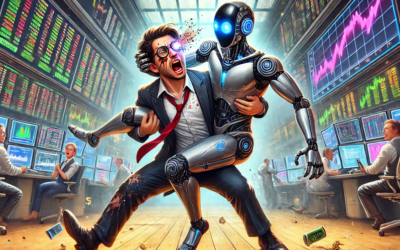Current lack of volatility in the markets – What to do!
Since we came out of the traditional Summer Slowdown in the markets (which ends after the US Labor Day holidays), the markets have been acting unusually. Unusually slow and choppy for the time of year. We’ve had 2 presidents threatening to nuke each other – and the markets barely reacted. We’ve made all time highs, which were met with a yawn.
There is a precedent for a more lively market in October and a push up to the end of the year AKA the “Santa Rally”. Now, while I don’t think you can take seasonal activity like the “Santa Rally” to the bank, I do think this lack of volatility is unusual.
For people trading intraday, it means the range is smaller on our chosen markets. The markets are much thicker (more market depth) and in turn, less volatile. Markets like the ES will trade many more contracts to get through a level. 800 per level has been quite normal. It’ll trade 2-3000 contracts at a level with absolutely no reaction at all.
Things that you normally see in the order flow frequently aren’t there as often. That pretty much applies to all markets that are suffering from the slowdown.
So what’s the plan?
Something has to change obviously. When the markets revert to this sort of activity, they behave differently. When they behave differently, you have to trade differently. My own thoughts on this when we didn’t pick up after Labor Day were “give it some time to return to normal”. Given that hasn’t happened, there’s a few choices:
- Move to a more volatile market. The behavior of a market is related to liquidity/volatility. If you trade S&P500, you will find the NASDAQ is currently behaving more like a ‘normal’ S&P500.
- Play the range – it’s a bit dull but it’s a skill you’ll be able to use at traditionally slower periods like summertime & Christmas. Just play the range it forms. No need to take huge risk. When doing this, ideally you want to see correlated markets out of synch as that is a key indicator towards rangebound markets.
- Wait it out. Not a bad option but trading is a perishable skill and if this happens for an extended period, you are going to get rusty.
My preference is to move to a faster market. I am not a fan of Nasdaq because of the tick value but at the end of the day, if you are trading indices, then it’s a less drastic move. Same news events, same open close times, same correlations all apply. A move to Crude would be ok but there are few reliable correlated markets with Crude and there are different news announcements that drive it (like the inventory numbers). So if you move to a market in a different sector, do a bit of research.
Beginners
If you are new to order flow, then traditionally slower markets like Eurostoxx, Interest Rates and S&P500 are currently very poor places to start. This is mostly because it is very hard as a beginner to identify momentum on these instruments right now. In addition, there is so much time where the market is static, there’s simply nothing to see. Crude, Nasdaq are good places for the beginner right now. If Crude becomes a bit too fast when the market springs back to life, then just move to something more liquid.
Back to normal?
No-one really knows when this will end but this IS business as usual in a way. The markets are always changing pace. We have to change with it. So while this is unusually slow for the time of year, it’s a good idea to always keep an eye on the volatility (VIX Index is a good guide) so that you know about changes before they start costing you money.
Simplify Your Trading
Take a look into the decision making process of professional traders with this video training series that helps you make smarter trading decisions.




0 Comments